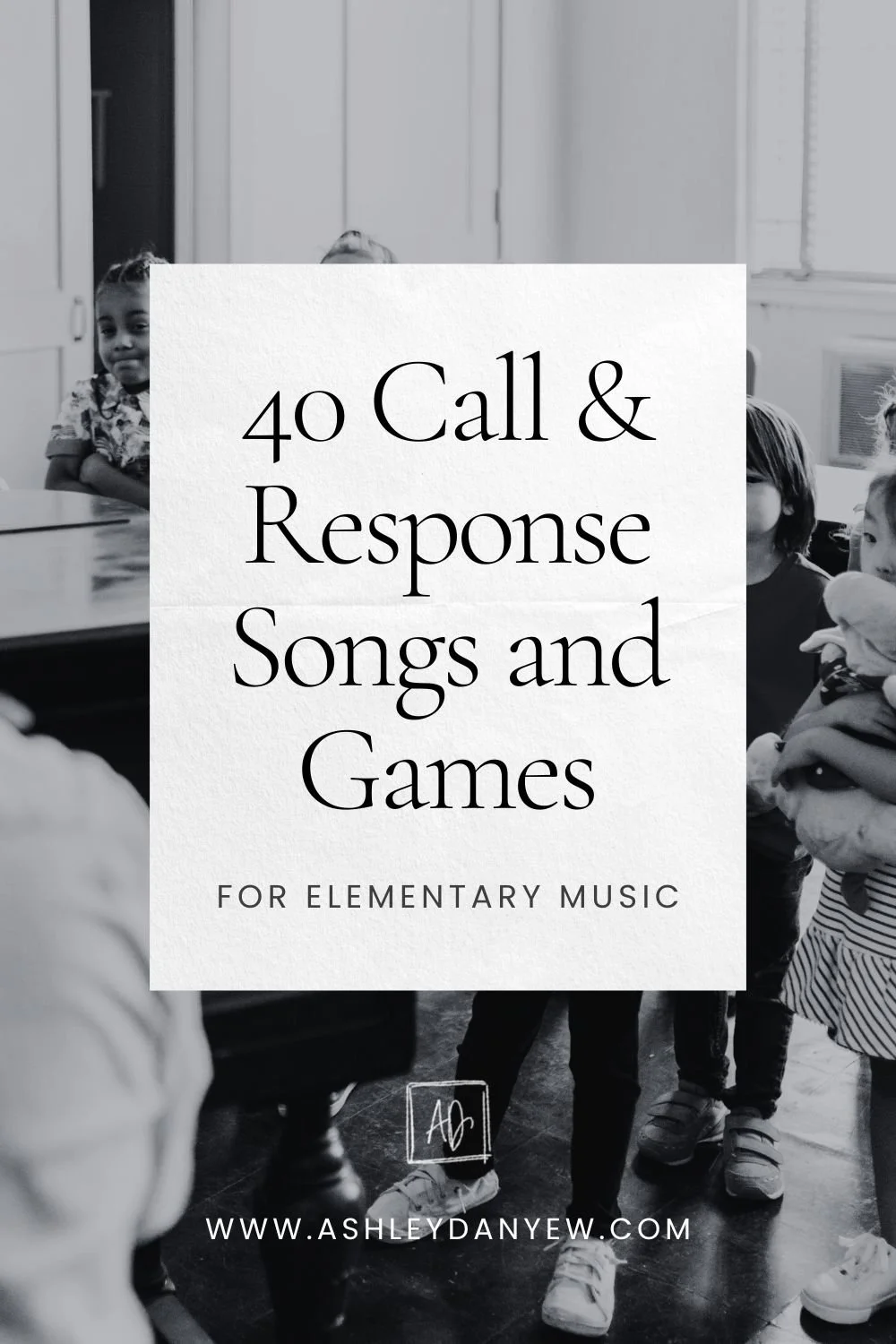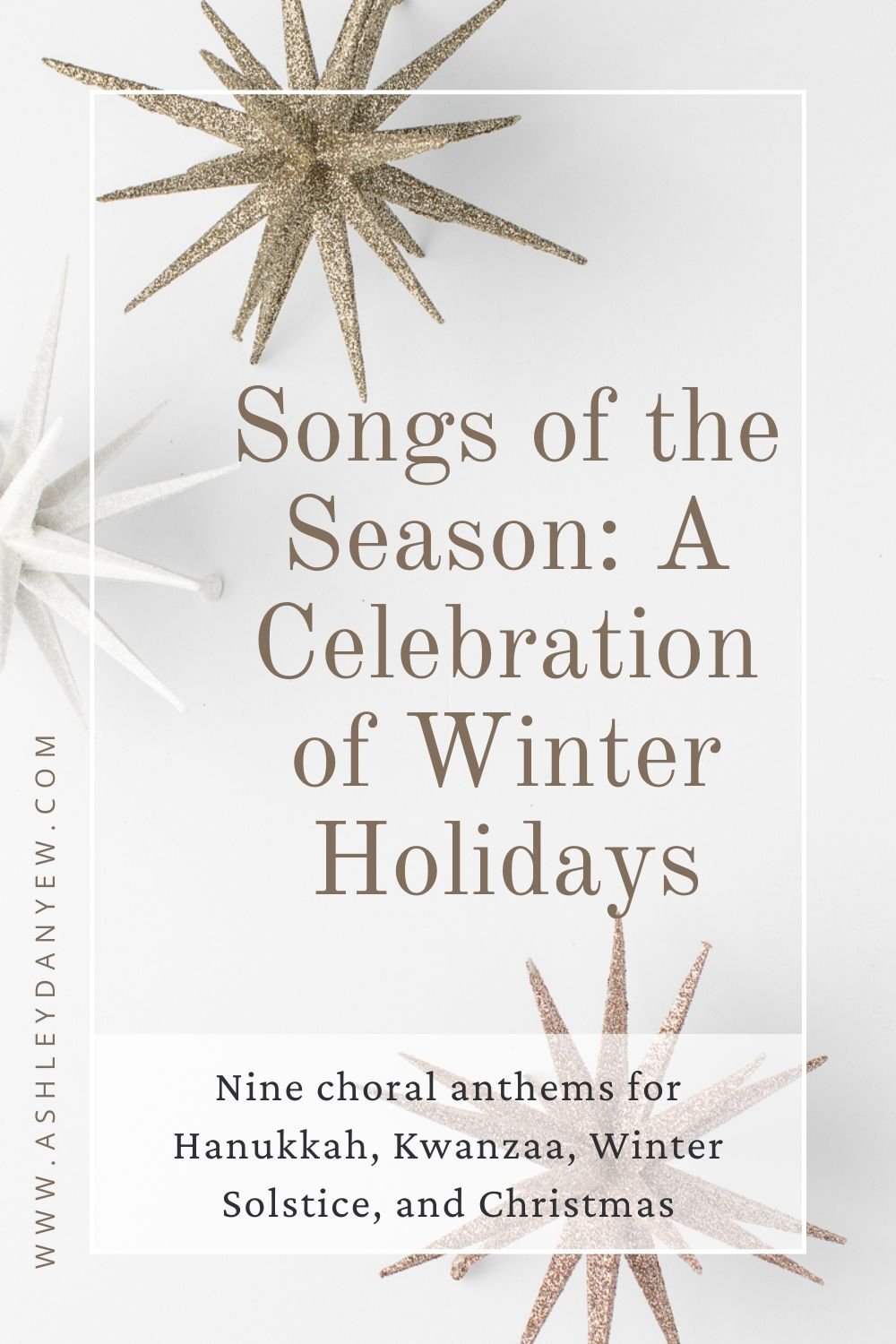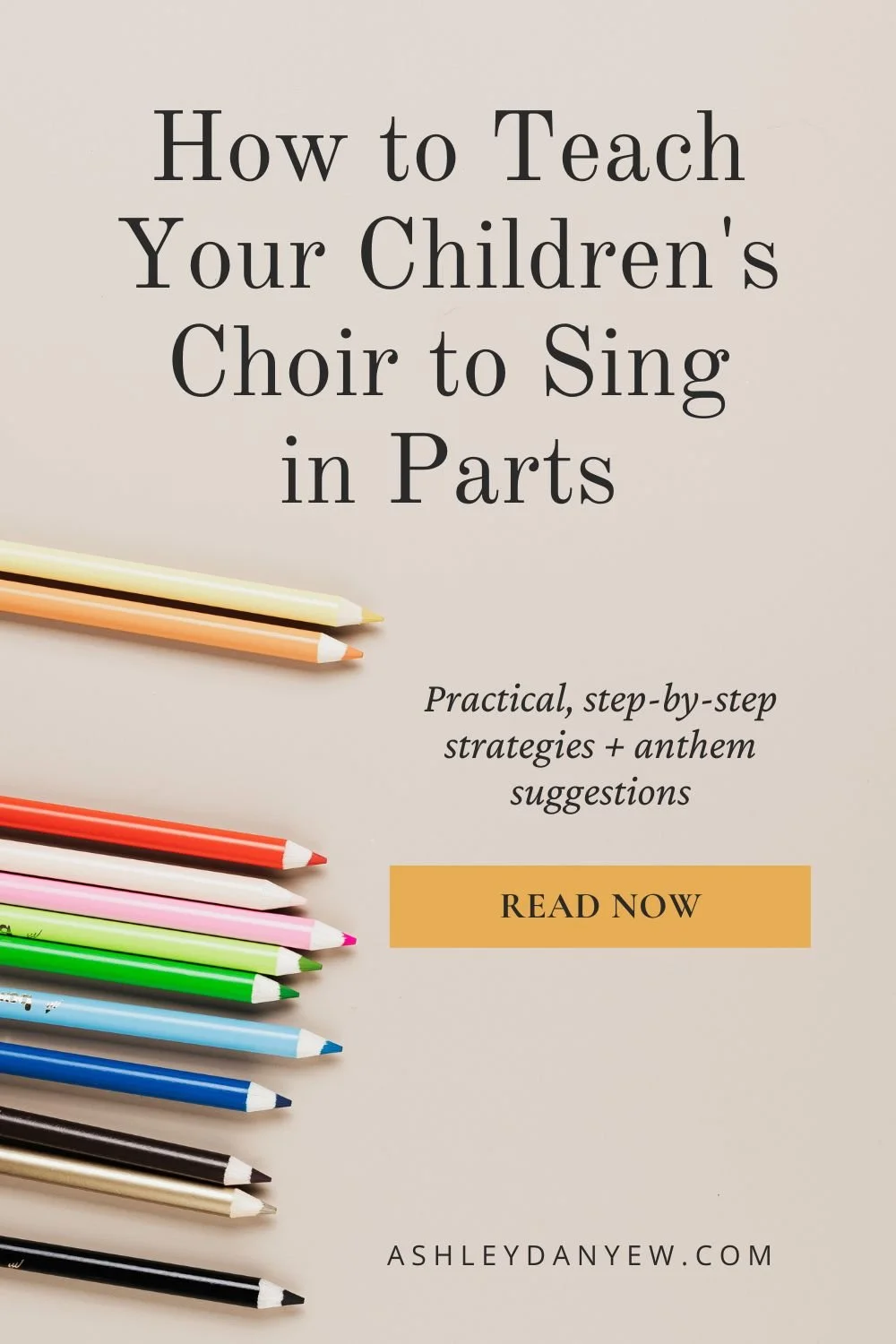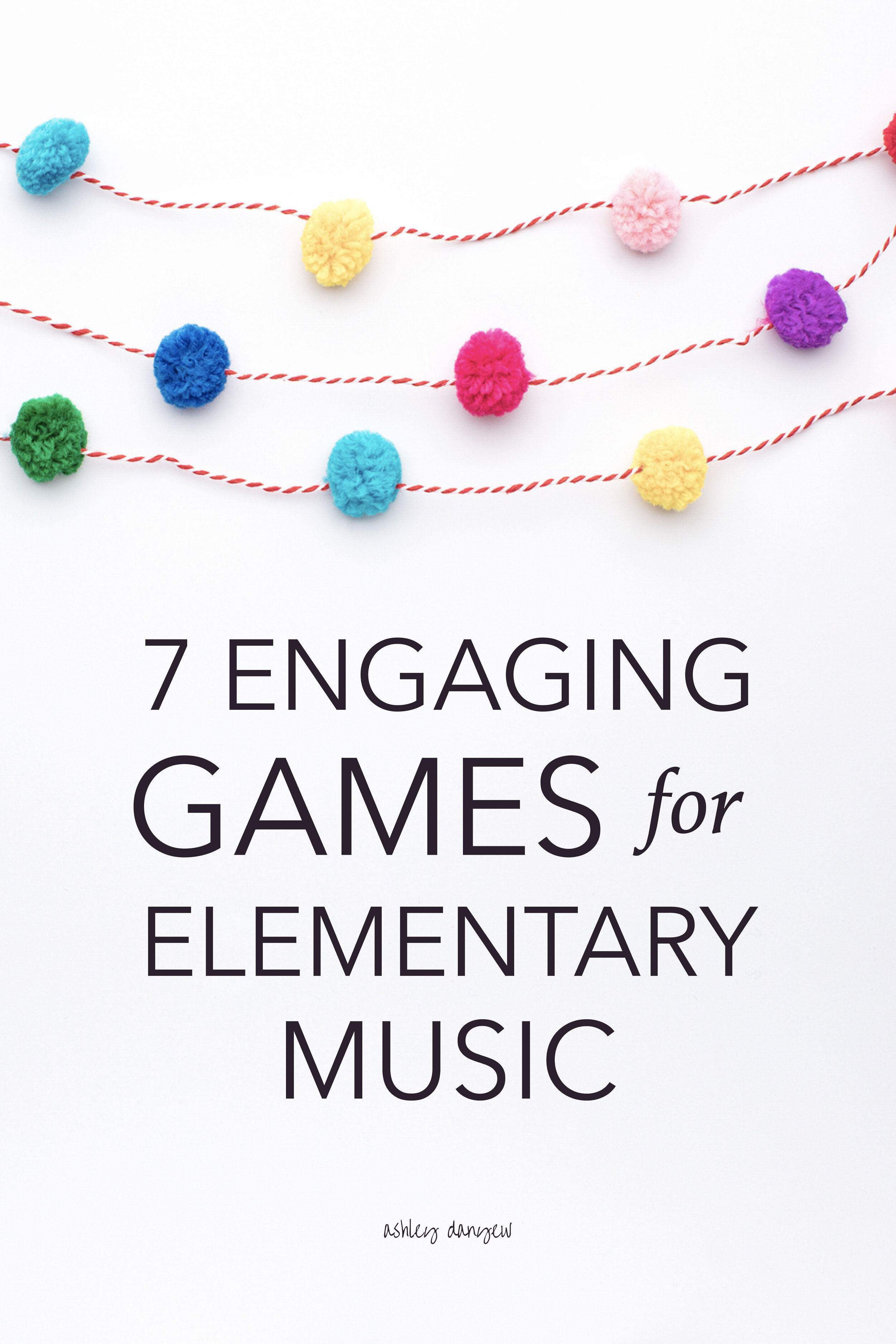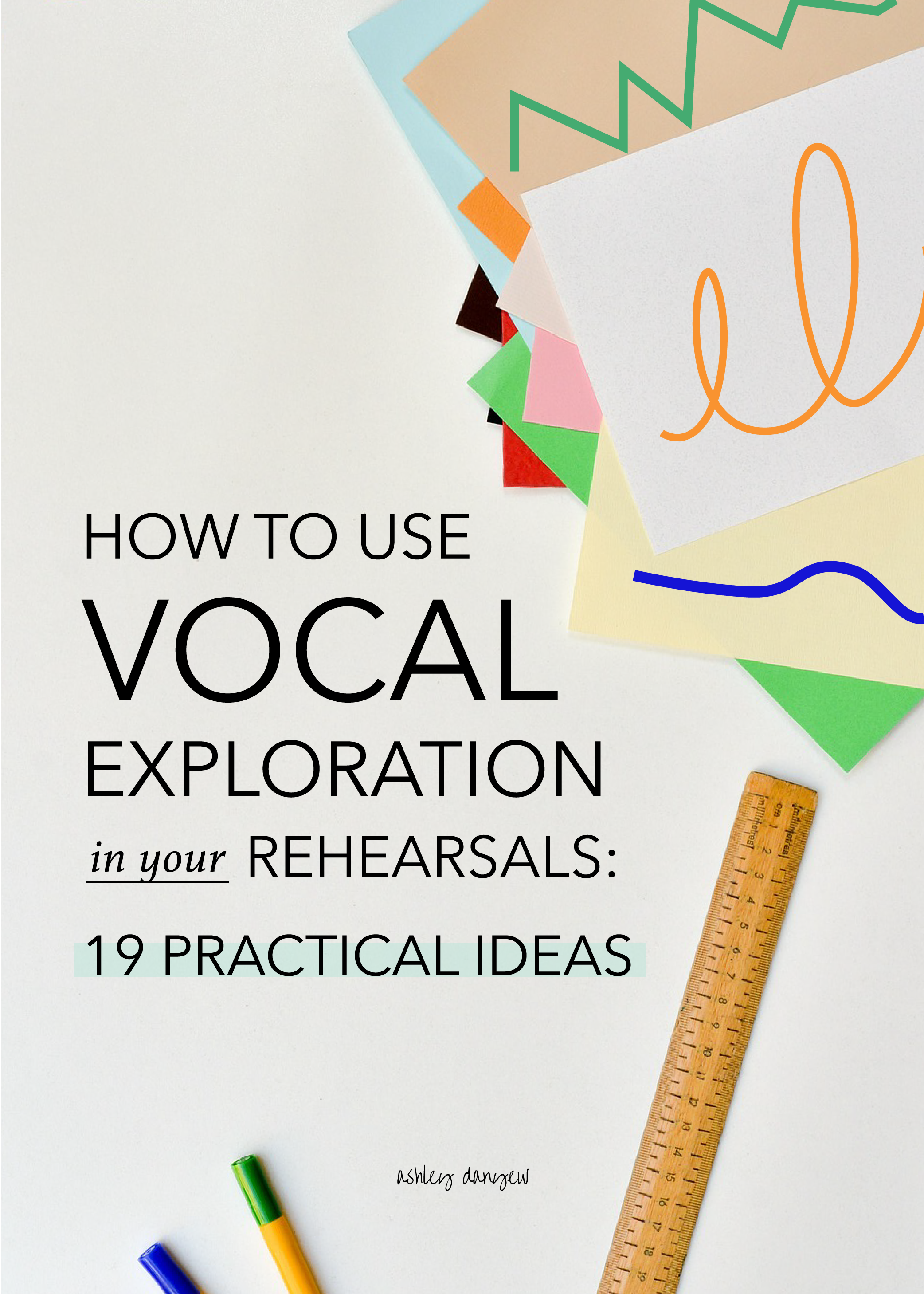*Disclosure: I get commissions for purchases made through links in this post.
Looking for a fun way to reinforce rhythm and steady beat, play melodies, and introduce harmony to your children’s choir?
Let me introduce you to Boomwhackers.
Boomwhackers are great for older elementary choirs, though they can be used in certain circumstances with younger elementary choirs.
Here are a few ways you can use them in your rehearsals:
Rhythm games: give each child a different rhythm pattern to play, then have them rotate.
Learning rhythm patterns: echoing back patterns they hear and improvising their own.
Learning chords and accompanying familiar songs or hymns
Listening and keeping the steady beat: play a recording of something and have the children play along, keeping the steady beat. For an extra challenge, choose something that doesn't stay in one tempo!
Learning solfege and playing tonal patterns: echoing back patterns they hear and improvising their own.
Experimenting with different sounds and patterns
For more game and activity ideas, see this post: Fun, Easy Gathering Activities for Children’s Choir
But, before I get too far ahead of myself, let me go over a few basics:
What are Boomwhackers?
First of all, what are Boomwhackers, exactly? For those of you who may be wondering, Boomwhackers are color-coded, plastic percussion tubes, tuned to musical pitches. They come in various lengths and colors - the longer the tube, the lower the pitch.
The colors are as follows:
C = Red
D = Orange
E = Yellow
F = Green
G = Teal
A = Indigo
B = Violet
The chromatic notes (e.g. C#/Db, D#/Eb, F#/Gb, G#/Ab, A#/Bb) are slightly different shades, so you can tell them apart from the diatonic notes. The pitch names are written on the outside of the tube.
Conveniently, these colors match the colors of the metal children’s handbells, so if you already have some resources for those, feel free to mix and match. You can also use handbells and Boomwhackers together, if you have both. The handbells work well for melodies and Boomwhackers can create a soft chordal accompaniment underneath.
Related post: How to Start a Children’s Handbell Choir
How to Play Boomwhackers
Boomwhackers create sound when struck against another surface. Hold the tube in one hand and tap it on your open palm. Tap two together, or tap one on your head or shoulders or knees. Tap it on the floor, a table, or the seat of a chair. Be careful not to tap it on a sharp surface, as this can damage the outside of the tube. You can also lay the tube flat on the ground or tabletop and tap on it with a small rubber mallet.
Here is a brief demonstration video showing five different ways to play Boomwhackers (including a few you may not have thought of!).
Supplies
You don't need much to get started playing Boomwhackers (besides the instruments themselves, of course!), but here are some helpful supplies and materials you might consider adding to your list:
If you don't already own a set of Boomwhackers, you can purchase them through Amazon. Here's a link to a basic C Major Diatonic Set, which includes the eight notes of the C major scale (Middle C through Treble C).
Depending on how many children you have in your choir, you may want to have two sets.
The basic diatonic set is great for starting out and playing pentatonic melodies or simple songs in the key of C major (though, the melodies must lie within the octave).
For songs with a slightly larger range, any chromatic notes, or songs written in another key that you don't feel like transposing, the Chromatic Set comes in handy. This set includes the five black keys (C#/Db, D#/Eb, F#/Gb, G#/Ab, and A#/Bb). This is especially useful for chord-playing when playing in keys other than C major.
Add some pitch variety to your Boomwhackers by adding these Octavator Tube Caps—small plastic caps that fit on the end of each tube to create a pitch that sounds an octave lower.
This is great if you have more than one of the diatonic sets: use the caps on one set so the duplicate pitches are an octave apart instead of doubled at the unison.
If you don't have a whiteboard in your rehearsal space, or you want to be able to write out songs or rhythm charts once and use them again in rehearsal later I recommend getting a few Post-It Super Sticky Easel Pads.
This is a handy way to store your charts and reference them again and again, plus you can carry them with you into the sanctuary and hide them in front of the first pew, if the children need to see it as they play.
Use these large (2") stickers to create noteheads on your music charts so the children can follow along with the music and keep track of when they play, based on color.
Another idea is to use these small (3/4") stickers:
color-code tonal pattern flashcards
compose your own song together
notate chords with an existing melody
mark a child’s individual copy of music
notate a short, simple melody for everyone to read together
Looking for an alternative to buying multiple sets of Boomwhackers for your choir? Here’s a video and free PDF printable showing you how you can make your own pitched percussion tubes using plastic fluorescent light covers from your local hardware store.
Free Rhythm Pattern Card Set
This free printable card set features 16 rhythm pattern cards in 4/4 time. Use them for call-and-response, a composition-based gathering activity, teaching a new song or anthem, or developing musical awareness and listening skills. Looking for more ideas? See this post.
Games & Activities
There are lots of great games you can play and activities you can do with Boomwhackers to illustrate and reinforce musical concepts in your children's choir rehearsals. Here are a few to get you started:
Toreador’s Boomwhackers
Geared toward older elementary children, here’s a free printable and play-along video by Growing in Grace to accompany the “Toreador Song” from George Bizet's Carmen.
Pass the Rhythm
A simple circle game involving a set of rhythm pattern cards and a few Boomwhackers. See how it’s done in this demonstration video.
In the Hall of the Mountain King
This song is always a favorite because it gets faster and faster at the end (a great way to introduce the concept of tempo and accelerando!). Have your children play along with this video as a gathering activity before choir.
Rhythm Games
Try a simple call-and-response activity with various rhythm patterns, use rhythm pattern cards to have your children practice reading rhythms on their own or composing their own series, or chant (and tap with Boomwhackers) a recurring rhythm in the context of a story or familiar song.
See these posts for more rhythm game ideas: Tried-and-True Rhythm Games: Part I and Tried-and-True Rhythm Games: Part II
Solfege Cards
Introduce solfege to your choir with these free printable cards, color-coded to match Boomwhackers.
Music
Depending on the age and level of your choir, you may want to look for (or create) music notation that is color-coded, so the noteheads match the color of the Boomwhackers. Here are a few resources to check out:
Color-Coded Music Resources
Boomwhacker Songbook: a free PDF printable booklet with a variety of folk songs.
Inspirational Songs and Christmas Songs by The Inspired Instructor: a collection of free sheet music (melody and harmony, notated and color-coded), rhythm charts, and slides to use in your rehearsals.
Color Chord-inated Christmas Carols for Bells or Boomwhackers (Jeri Crosby): a digital download collection featuring chordal accompaniments and notated (color-coded) melodies for four Christmas favorites: Silent Night, Joy to the World, Away in a Manger, and Coventry Carol.
10 Traditional Spirituals for 8-Note Bells and Boomwhackers (arr. Sharon Wilson): a digital download collection with color-coded notation, featuring chordal accompaniments for 10 different Spirituals. The melody line is intended to be played by handbells and the chordal accompaniment is for Boomwhackers.
Praise Him for 8-Note Bells and Boomwhackers (arr. Sharon Wilson): a digital download collection with color-coded notation. Handbells play the melody line and Boomwhackers play the chordal accompaniment.
When the Saints for 8-Note Bells and Boomwhackers (arr. Sharon Wilson): a digital download collection with color-coded notation. Handbells play the melody line and Boomwhackers play the chordal accompaniment.
Planning Resources
ChimeWorks: a collection of individual, downloadable lesson plans for handbells, chimes, and Boomwhackers. Read more about the different types of lesson plans available and view some sample plans here: Chords, Ostinati, Icons, Ring and Sing, and Scales.
Here are a few songs and teaching plans you might consider:Amazing Grace (Chords)
Angels We Have Heard On High (Chords)
Sing Noel! (Chords)
Christmas Round (Ostinati)
For Your Gracious Blessing (Ostinati)
Ode to Joy II(Icons)
Joy to the World (Ring and Sing)
Kumbayah II (Ring and Sing)
St. Paul’s Steeple (Scales)
Other Resources & Materials
10 Timeless Hymns for Voice and 8-Note Boomwhackers (arr. Sharon Wilson): a digital download collection featuring chordal accompaniments for 10 well-known hymns with a notated melody line and text for singing along.
Just Jams: A World of Rhythms for Drums, Pitched Percussion, and More (Mark Burrows): a collection of rhythmic speech, body percussion, and percussion parts with suggested instrumentations and performance ideas. Intended for grades 2-6.
Tonal and Rhythm Pattern Card Set: a printable tool to help children learn the language of music and develop their music-reading skills. (Younger Elementary: K-2nd grade, Older Elementary: 3rd-5th grade)
Summary
Boomwhackers are a great way to introduce movement and instrument-playing into your children's choir rehearsals, plus they help reinforce the concepts of steady beat and rhythm patterns, tonal patterns, chords, and harmony (win-win-win).
Do you use Boomwhackers with your choir? What are your go-to resources?











